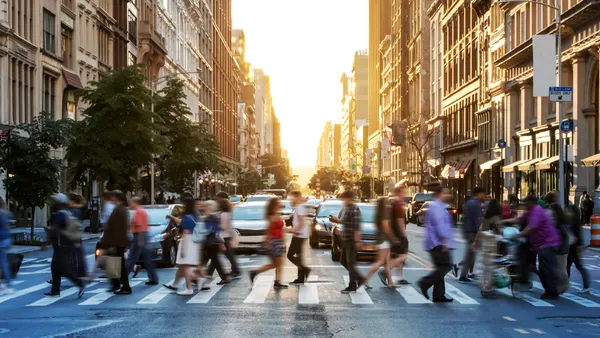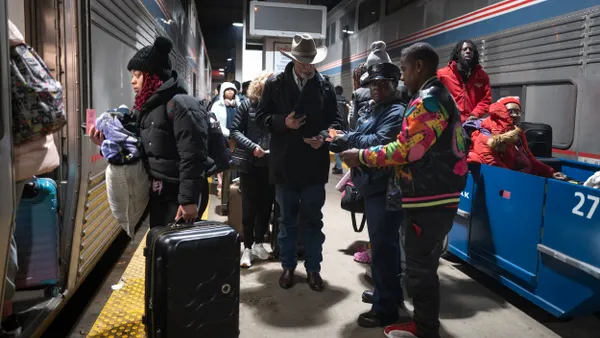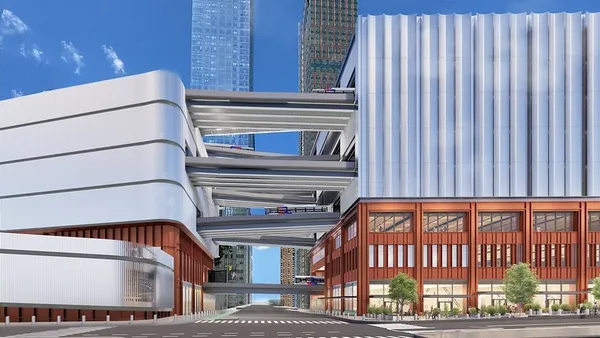Dive Brief:
- San Francisco Mayor London Breed called for improvements and expansions to the city's bike network to boost cyclist safety.
- Breed instructed the San Francisco Municipal Transportation Agency (SFMTA) to double its production of protected bike lanes over the next two years to create a total of 20 miles of new lanes. The new lanes will be designed to better connect existing lanes in the network.
- SFMTA also has been instructed to increase citations for vehicles blocking bike lanes by 10% over the next six months by using 311 data. "Too often we see bicyclists forced into traffic as a result of people parked illegally in the bike lane, and we need to reinforce that this is not only against the law, it is dangerous and unacceptable," Breed wrote in a Medium post.
Dive Insight:
Many times urban infrastructure takes on an "if you build it, they will come" approach. Bike lanes are like that, especially in densely populated and trafficked cities where cyclists fight for space with vehicles on busy roads. A lot of potential urban cyclists don't feel comfortable or safe riding on traditional city streets, but bike lanes — particularly the protected ones — provide a highly visible buffer between cyclists and vehicular traffic. Ensuring safety is a way to meet Vision Zero goals and boost bike ridership, which ultimately can reduce traffic congestion and vehicle emissions.
But motorists don't always heed bicycle lanes. Vehicles driving, parking or idling in bike lanes is a problem nationwide and eliminates cyclists' safety protections. That's why cycling advocates push for protected lanes that have a physical barrier to keep vehicles away from cyclists. Following public outcry after a couple cyclist deaths this spring, Washington, DC has introduced legislation that would mandate the construction of protected bike lanes on any streets that need to be repaired on those roads already deemed a biking hazard. Cambridge, MA pioneered that move when in April it became the first city to mandate protected bike lanes.
Protected bike lanes are one part of the solution for cyclist safety, while cracking down on bike lane offenders is another. Last year, Chicago leaders looked into partnering with the website Bike Lane Uprising — a crowdsourced site where users report locations and upload photos of vehicles stopped in bike lanes — as a way to identify people who should be ticketed. The How's My Driving app enables similar reports in Washington, DC. These methods factor in cities' lack of ability to add enforcement resources due to cost. Breed notes the resource issue when explaining that San Francisco's increase in citations for blocked bike lanes will come from an existing resource: the city's 311 system.
Cities are renewing their cyclist safety measures and launching new initiatives to build more bike-friendly cities as they strive for Vision Zero and emission reduction goals. Cities including St. Petersburg, FL are altering master plans and implementing complete streets plans to put a higher priority on cycling safety. Others are adding bike infrastructure as their bike-share programs expand. A recently released ranking from PlacesForBikes — which listed Boulder, CO as the best biking city in the U.S. — suggested these improvements might be increasing cities' bike friendliness, as higher city ratings were more prevalent than in last year's survey.










